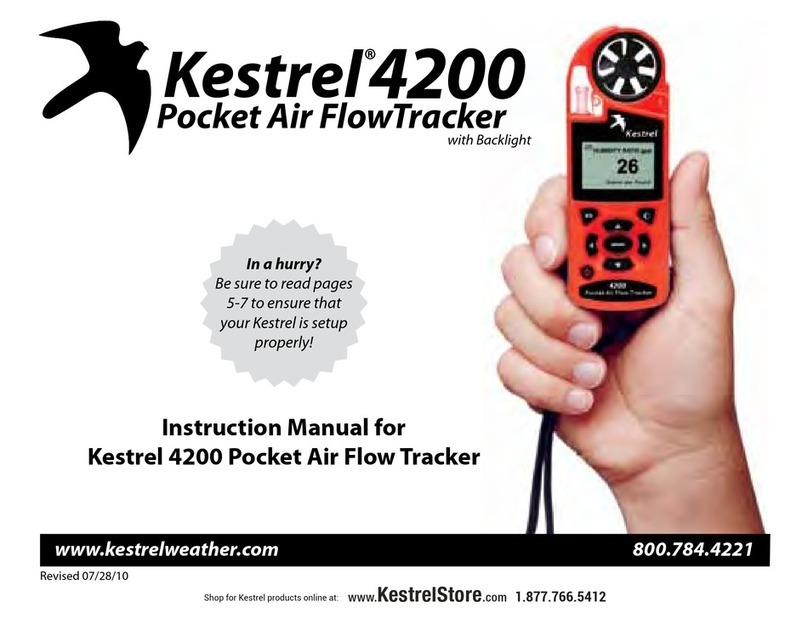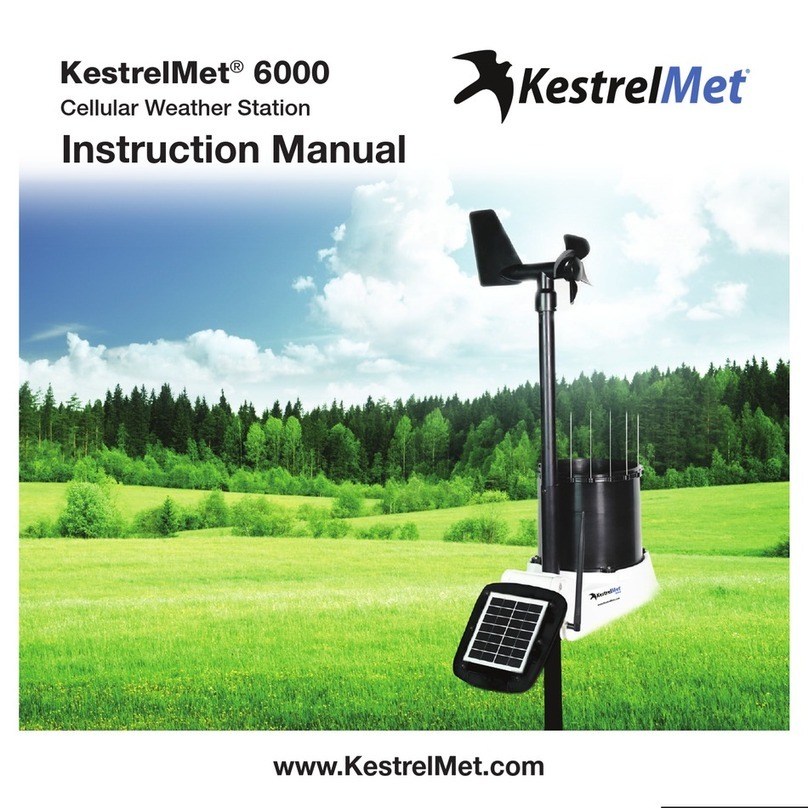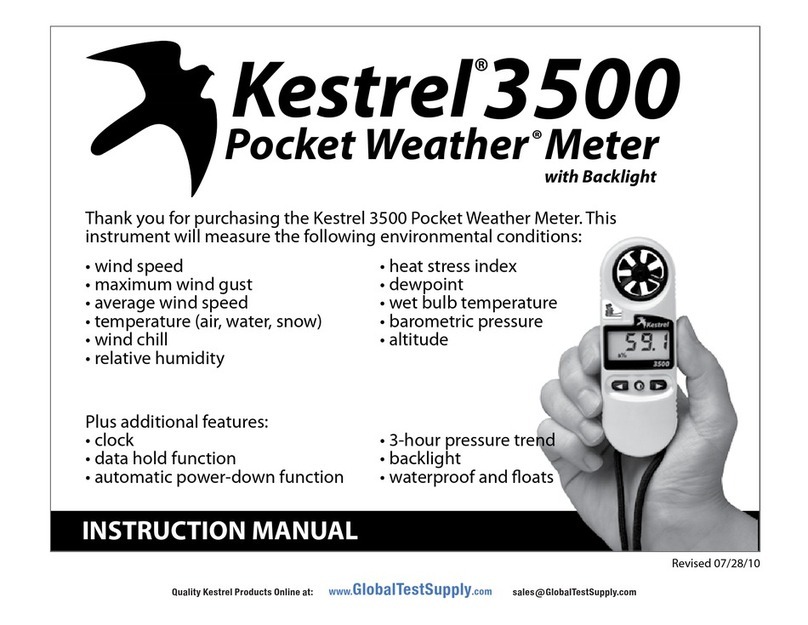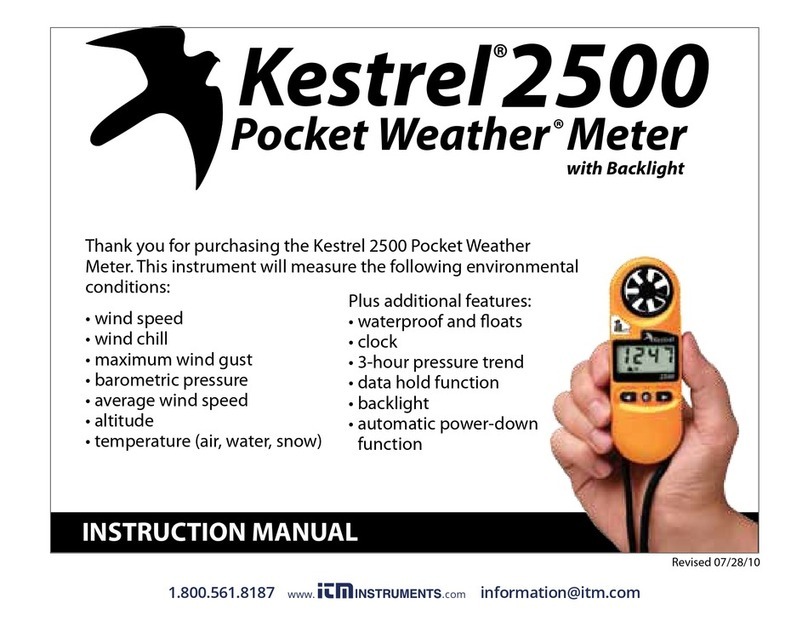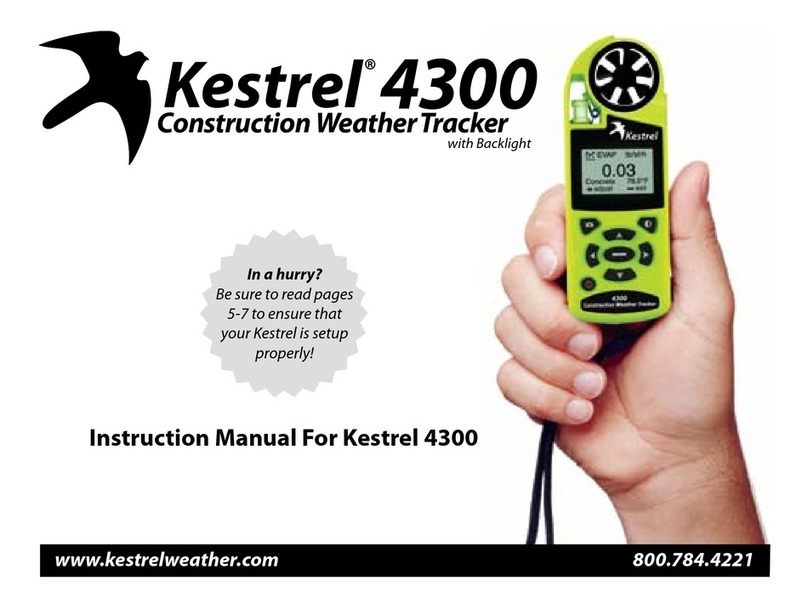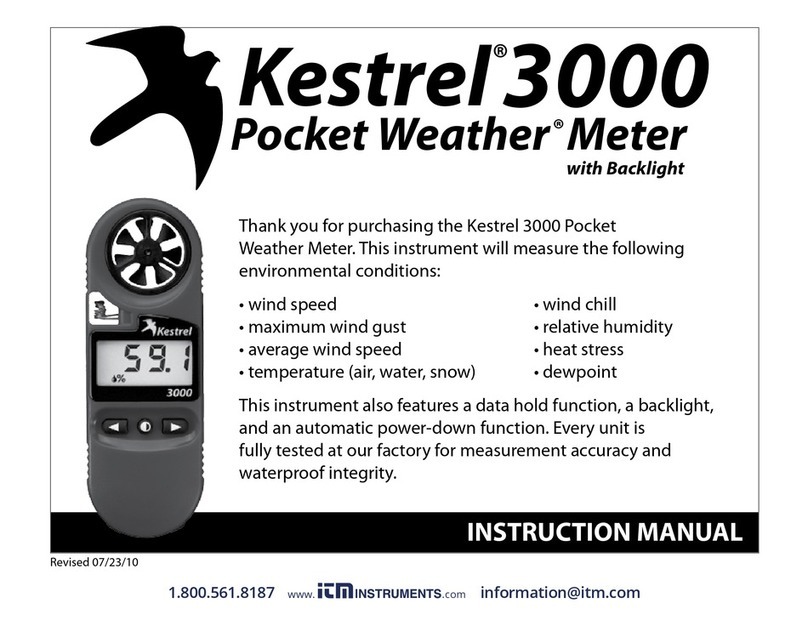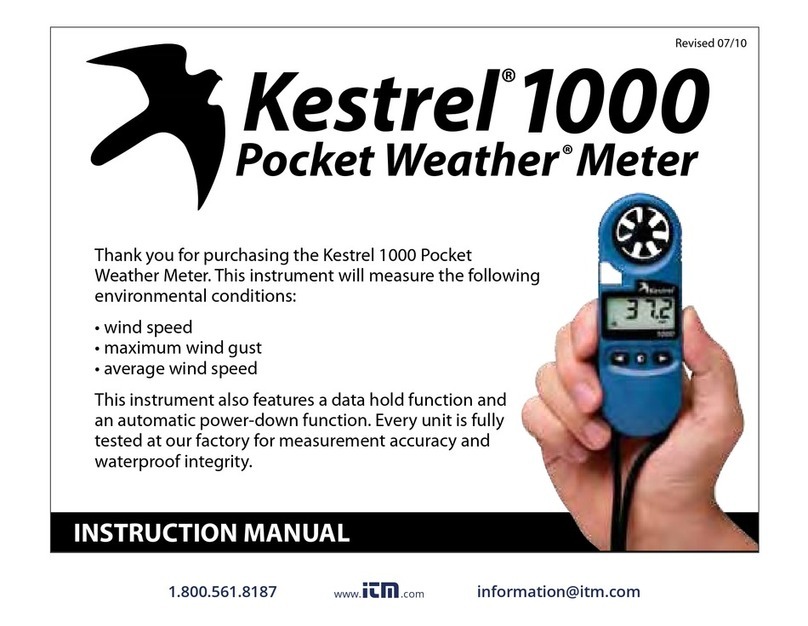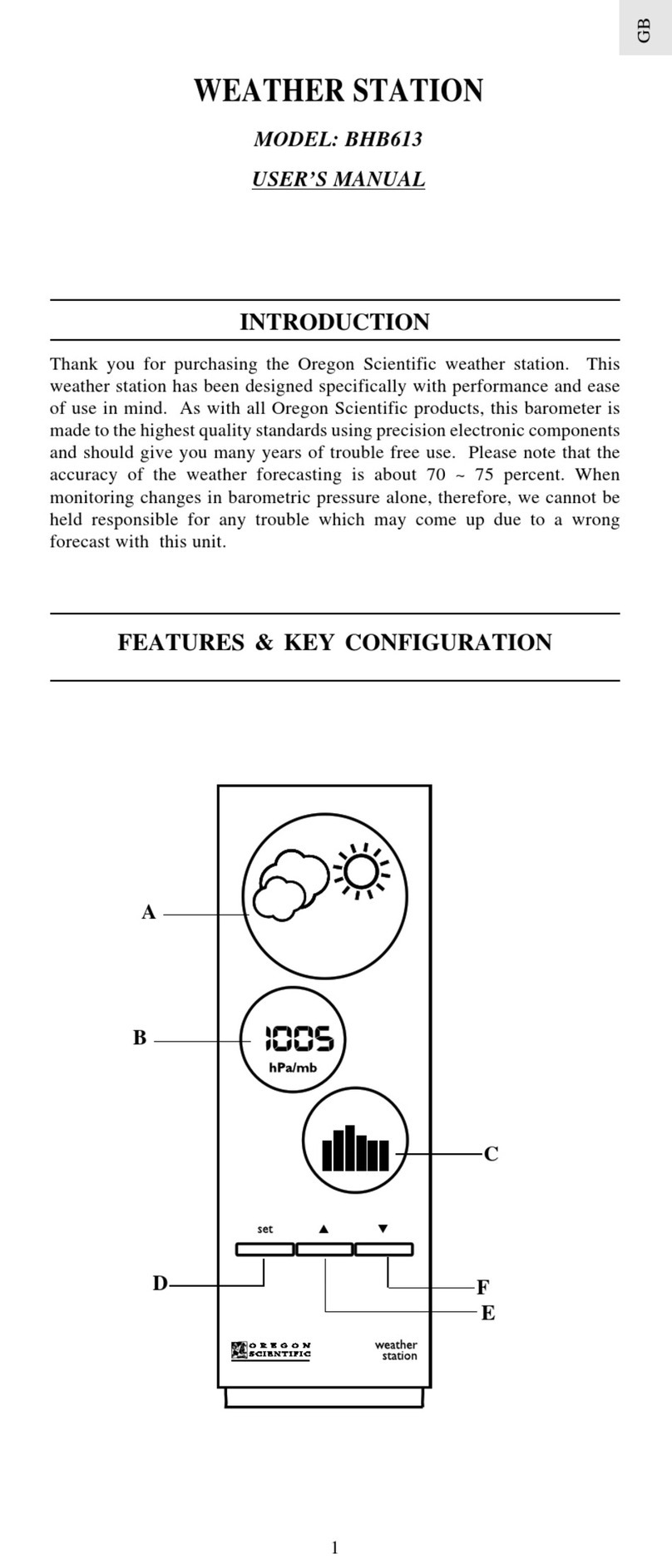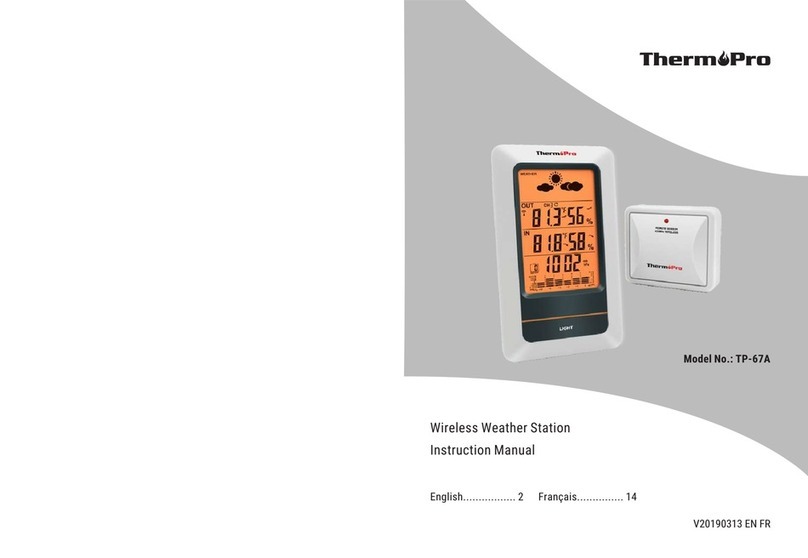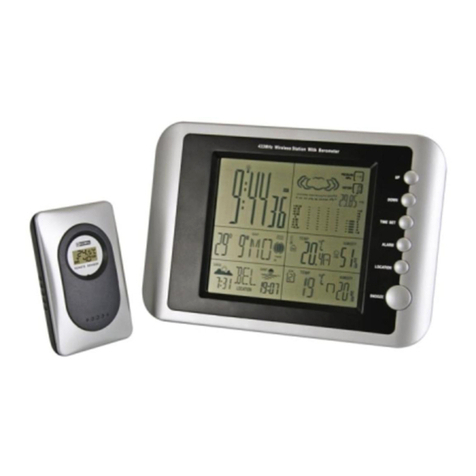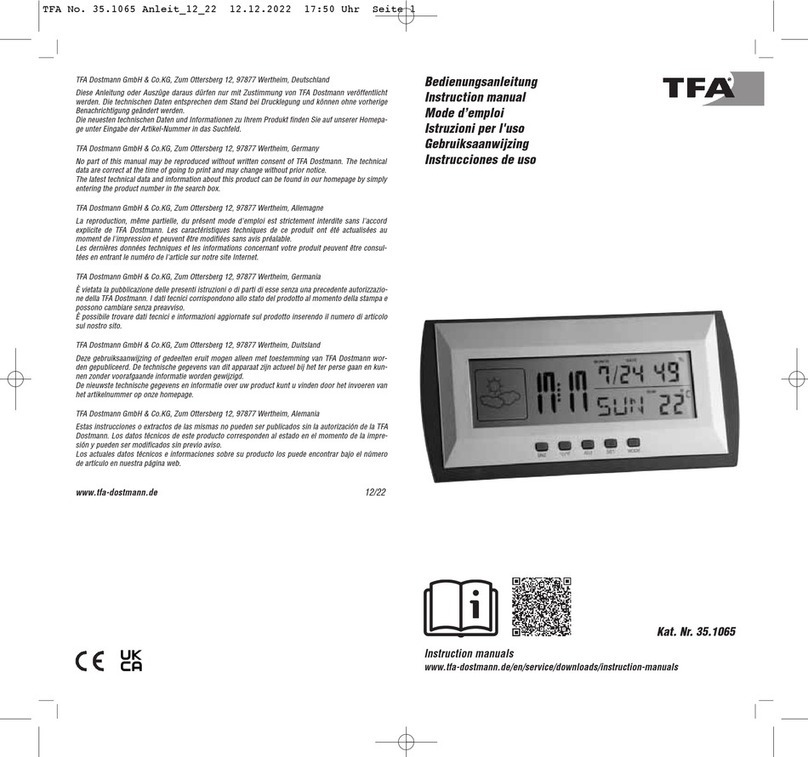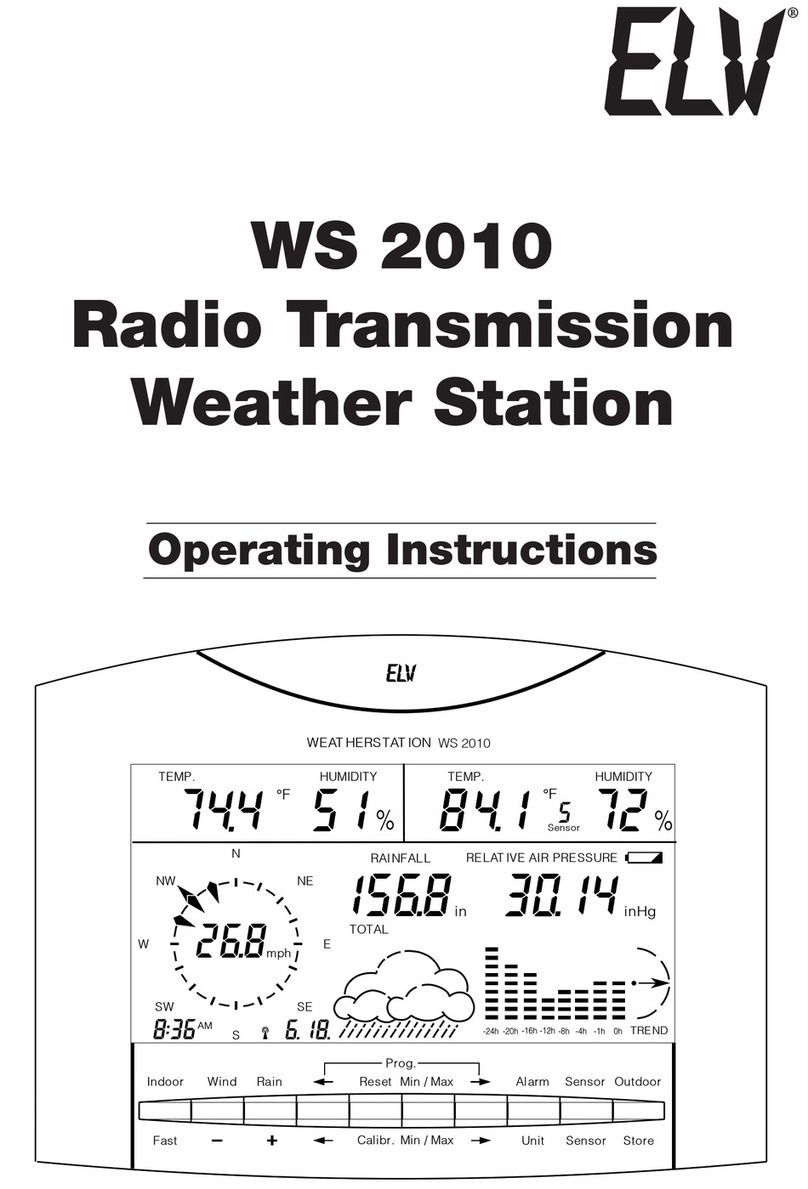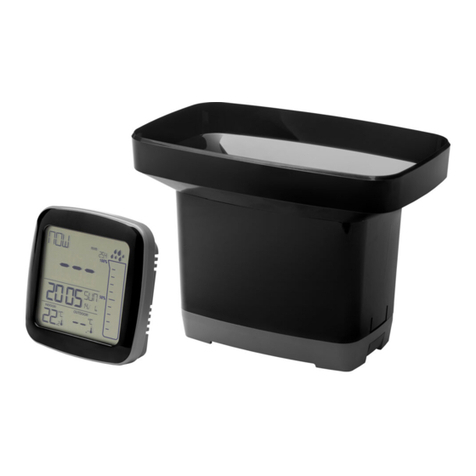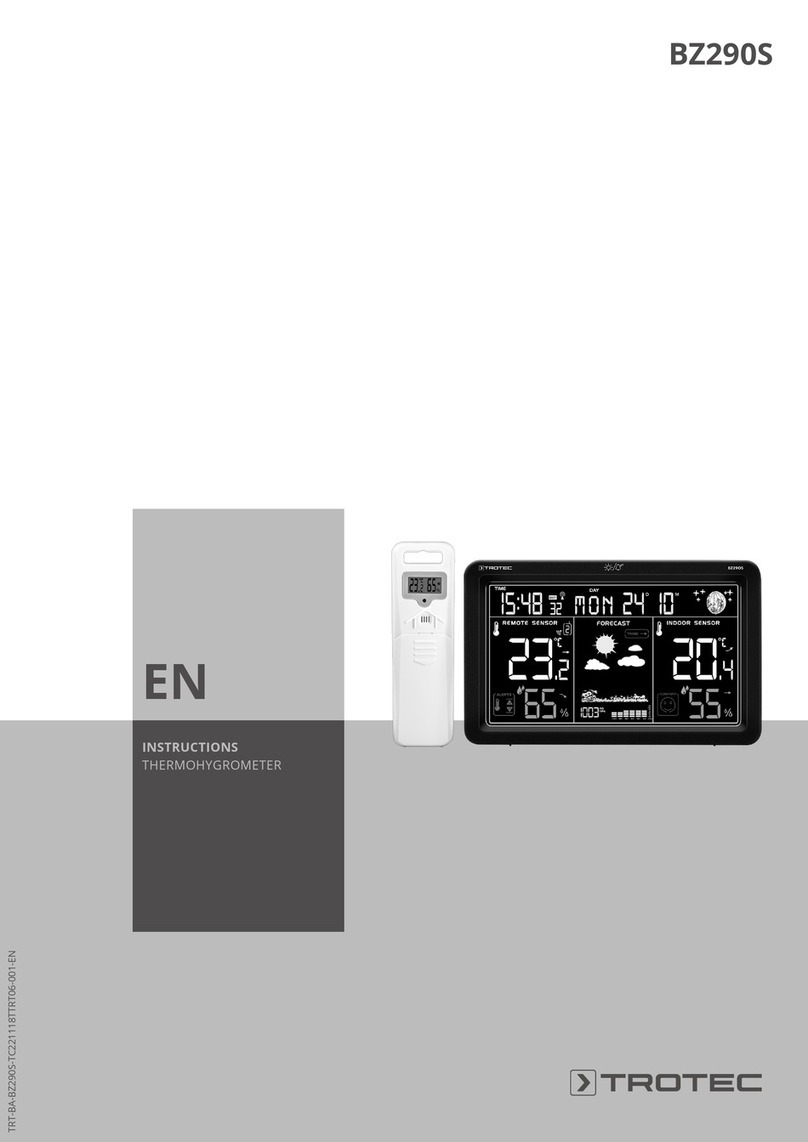Manual Data Storage
To manually store data, press the button. One of the following will appear: Data Stored (data has been
captured and will appear on chart), Full (Overwrite is off and data log is full), or Off (Manual Store button has been
disabled). See below for more information on Memory.
Backlight
Press the button to activate the backlight. The light will remain activated for one minute. Press the button
within one minute to deactivate the light manually.
You can customize your Kestrel 4000 in multiple ways. Press the button to access the Main Setup Menu. Press
the button to select the highlighted setting.
Off - Press the or the button to turn the display off. Even when the Kestrel’s display is turned off, the unit
will continue to automatically store data at the defined Store Rate. Wind speed will NOT be stored when the unit
is off.To continously measure wind speed, turn the auto shutdown off (pg. 12) The battery life is decreased if data
is stored frequently. The only way to completely shut off the unit is to remove the batteries.Custom settings and
data will be stored when the batteries are removed.
Data Log - These settings control the data storage properties. Press the button to return to the Main Setup Menu.
Setting Description Operation
Auto Store When On, data is automatically stored at preset Store Rate. When Press or to toggle
(On/Off ) Off, data is only stored when manually captured with the button. between On and Off.
Clear Log All stored data is cleared.This will also clear Min/Max/Avg data. Press or to clear the log.
(Go/Done)
Reset MMA All Min/Max/Avg data is cleared.Chart data will remain intact. Press or to clear the MMA.
(Go/Done)
Store Rate* The frequency at which data sets are automatically stored. Press or to increase or
(2 sec - 12 hr) (Battery life may be shortened if data is stored frequently.) decrease Store Rate frequency.
Overwrite This setting only applies when the data log is full. Press or to toggle
(On/Off ) When On, oldest data point is discarded to allow memory for between On and Off.
the new data point. When Off,new data points are not saved.
Man Store When On, data is stored when the button is pressed.When Press or to toggle
(On/Off ) off, the button is disabled. between On and Off.
* When unit is off, data is NOT stored for 2 sec and 5 sec Store Rates.
System - The display Contrast and Auto Shutdown an be reconfigured as required. Press the and buttons
to highlight either Contrast or Auto Shutdown, and the or button to adjust.
The Contrast can be adjusted for better visabiltity depending on the ambient lighting conditions. Press the
or button to increase or decrease the contrast from 0 to 20 (0 is lightest, 20 is darkest).
The display can be set to automatically turn off in order to conserve the battery life. Auto Shutdown will only
occur after the preset time has elapsed without any button presses. Press the or button to scroll through
the Auto Shutdown options (15 minutes, 60 minutes, Off ).
The percent of full battery power is also shown in this menu.
Press the button to return to the Main Setup Menu.
Date & Time - The date and time, as well as date and time formats, can be adjusted.
TheTime Formats available are:12 hour and 24 hour. The Date formats available are day/month/year and month/
day/year. (See page 5 for instructions on how to set the date and time. ) Press the button to return to the
Main Setup Menu.
Language - Displayed text can be set in one of three languages: English, French or Spanish. To choose a
language, use the and buttons to highlight the desired language. Press the button to select the
language and return to the Main Setup Menu.Otherwise,press the button to return to the Main Setup Menu
without changing languages.
Restore - Factory default menu settings can be restored. Press the or button on either Metric or Imperial to
restore the factory settings. (See page 12 for a list of the Factory Default Settings.) Press the to return to the
Main Setup Menu.
Baro Cal - Please contact NK for information about recalibrating the barometric pressure sensor.
Humidity Cal - Please contact NK for information about recalibrating the humidity sensor. 11
9
Graph Scale - These settings control the chart limits of your meter. Depending on the conditions, the lower
and upper limits of the chart scale may need to be adjusted in order to get the best view of the data.
Highlight the desired measurement by pressing the or button. Select the highlighted measurement by
pressing the button. Press the or button to increase or decrease the value of the limits. Press the
or button to change between the upper and lower limits. Press the button to exit and return to the
measurement selection screen. Press the button to return to the Main Setup Menu.
Units - The units of measure can be adjusted to best suit the application. The following units are available:
Wind Speed Temperature, Pressure Altitude,
m/s meters per second Dewpoint,Wet inHg inches mercury Density Alt.
km/h kilometers per hour Bulb Temp, Wind hPa hecto pascals m meters
kt knots Chill & Heat Index psi pound per ft feet
mph miles per hour °C Celsius square inch
ft/m feet per minute °F Fahrenheit mb millibar
Bft Beaufort
Highlight the desired measurement by pressing the or button. Press the or button to scroll
through the available units. Press the button to return to the Main Setup Menu.
User Screens - The three User Screens can be reconfigured to display the most appropriate information for the
application. Only current measurements can be selected for the User Screens - Min/Max/Avg and Charts are not
available.
Highlight the desired User Screen by pressing the or button. Press the button to select the highlighted
User Screen. Press the and buttons to change lines,and the or button to scroll through the available
measurements for each highlighted line. Press the button to return to the User Screen Setup Menu. Repeat
above process for the other User Screens or press the button to return to the Main Setup Menu.
10
12
The below definitions have been greatly simplified in order to keep this section brief. We strongly
recommend that anyone who wishes to make use of these measurements refer to one of the many
excellent weather references available for a more in-depth definition. On the internet, visit
www.usatoday.com or www.noaa.gov. Or, locate the USA Today publication, The Weather Book.
Please note that any words in a definition printed in italics are themselves defined in this glossary.
Altitude: The distance above sea level. The Kestrel 4000 calculates altitude based on the
measured station pressure and an assumed or known barometric pressure.
Barometric Pressure: The air pressure of your location reduced to sea level. Pressure will change
as weather systems move into your location. Falling pressure indicates the arrival of a low pressure
system and expected precipitation or storm conditions. Steady or rising pressure indicates clear
weather.
Density Altitude: The altitude at which you would be,given the current air density. Often used by
pilots in order to determine how an aircraft will perform. Also of interest to individual who tune
high performance internal combustion engines, such as race care engines.
Dewpoint: The temperature to which air must be cooled in order for condensation to occur. The
difference between dewpoint and temperature is referred to as the“temperature/dew point spread”.
A low dewpoint spread indicates high relative humidity, while a large dewpoint spread indicates
dry conditions.




